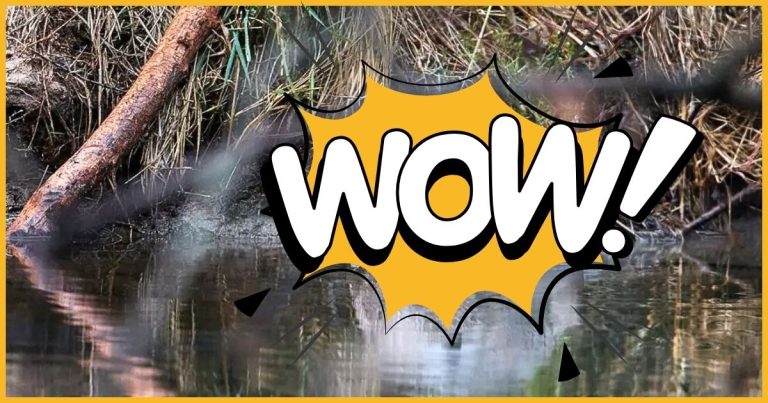
When slow-moving bureaucracy meets nature’s original construction crew, the result is a whisker-twitching triumph. In the Czech Republic, a stalled dam project meant to protect wetlands and its endangered crayfish found unlikely heroes: a team of buck-toothed engineers with impeccable work ethic and zero patience for red tape.
For years, officials grappled with land negotiations and delays on a barrier to shield the Klabava River from sediment and acidic water. Enter the beavers — nature’s dam-building pros — who gnawed through the problem literally overnight. “Nature took its course,” Bohumil Fišer, head of the Brdy Protected Landscape Area, said. The rodents’ handiwork saved taxpayers a whopping 1.2 million euros, proving that sometimes the best solutions come with fur and flat tails.

A dam made by beavers. Photo by The Nature Conservation Agency of the Czech Republic
The project, stalled since 2018 on a former military site, was no match for the beavers’ ambition. While humans debated, the chisel-toothed crew piled stones, packed mud, and engineered a sprawling wetland twice the size of the original plan. “Beavers are absolutely fantastic and when they are in an area where they can’t cause damage, they do a brilliant job,” Fišer said. The new habitat now teems with life, a testament to their unpaid overtime.
But how do these “giant water rodents” pull it off? Using their signature mix of grit and instinct, beavers transform waterways into biodiverse havens. “They’re fundamentally changing the way water and life moves through that landscape,” Emily Fairfax, an ecology professor, said. Motivated by a fear of predators — on land, they’re “a big chicken nugget,” she said, laughing. So, they build ponds as safe havens, inadvertently boosting ecosystems.
Their resume isn’t limited to the Czech Republic. In California, beavers revived a floodplain, saving officials time and cash. “All they had to do was let the beavers be there,” Fairfax said. Yet, their talent often goes unnoticed. “We sort of have a blindness for beavers,” she said, noting their knack for rapid, landscape-scale changes.
They’re powerful, they’re big, and they’re elusive.”
While some landowners grumble over felled trees or flooded fields, the Klabava project faced no such drama. Nestled far from farms, the site is a beaver utopia. “We don’t expect any conflict with the beaver in the next 10 years,” Fišer said.

A protected wetland area south of Prague in the Czech Republic was shaped by beavers. Photo by The Nature Conservation Agency of the Czech Republic
As for Fišer, he’s content to let nature’s engineers take the lead. “The beavers have done exactly what we had planned in tedious bureaucracy. And they did it for free,” he said. Their secret? No meetings, no permits — just paws, persistence, and a flair for wetland real estate.
So next time a project stalls, maybe skip the paperwork and call a beaver. After all, as Fairfax put it: “Oftentimes we don’t want to allow the beavers to make the choices, because it’s hard to plan around that uncertainty; it’s hard to turn over control to a giant water rodent. But that’s when beavers are at their best.”
In a world bogged down by delays, these furry overachievers remind us that sometimes, the best plan is to let nature handle the blueprint — and the construction crew.
Sources: NY Times | ZME Science


